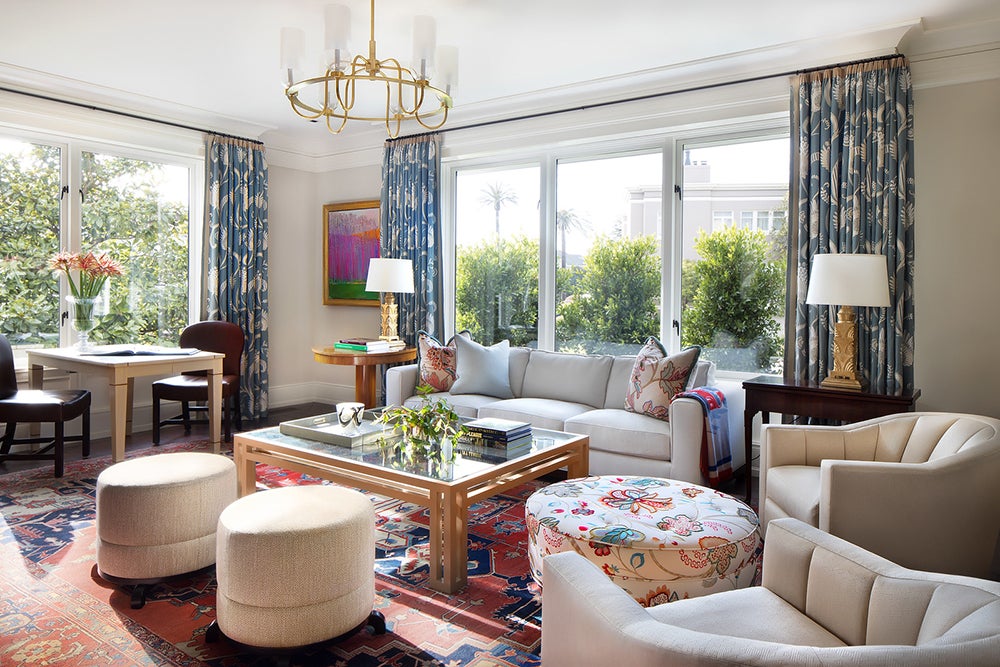When everyday consumers imagine interior designers, they probably picture creatives pushing brimming carts down gleaming furniture store aisles, not poring over floor plans and sifting through inboxes full of invoices and purchase orders. The behind-the-scenes work of being a designer goes far beyond the glamorous end result, requiring steadfast communication and organizational skills. Enter Studio Designer, project management and accounting software that helps designers manage the left-brained side of their businesses. The brand’s services encompass crucial managerial functions like sending, tracking and approving proposals, invoices and purchase orders from customers—and, soon, vendors as well.
“Our vision is to empower creativity,” CEO Keith Granet tells Business of Home. “If we take away the background noise, it allows designers to focus on their designs because they spend less time worrying about the accounting processes.”
It’s a message that has clearly resonated across the industry. In March of 2020, Studio Designer worked with about 6,500 clients. Recently, the software celebrated 10,000 users and announced that it had processed $2 billion in orders in the last 12 months. “When we bought the company in December 2014, there were 2,200 users,” says Granet. “We’ve had a tremendous amount of growth, adding nearly 50 percent in the last year [alone].”
And Studio Designer isn’t slowing down, with new initiatives in production to prepare for the future of interior design. Granet attributes most of the growth to the software’s transition from a desktop platform to the cloud. With this advancement, the company can accumulate statistics about how the design industry is evolving without analyzing specific users’ data.
“We’re putting together industry reports that show, for example, the average billing rates for designers in your region or markup,” he says. “What’s the average salary of a junior designer? What kind of benefits should you offer? When clients think you’re more expensive than your competition, there will be actual data to verify whether or not that’s true. This data has value for everyone.”
Austin, Texas–based designer Kristen Nix has found Studio Designer’s reporting tools especially helpful as she recalibrates her fees. “We use the profitability report to make sure we are pricing projects appropriately,” she explains. “It allows us to better gauge the scope of a potential project and make sure our client’s needs are met with our business profitability matrix.”
Studio Designer rejects the notion that the way things have traditionally been done in the industry is “just the way things are,” says Granet, explaining that the company’s mission is to reinvent the accounting process to make it “easier, more efficient and more profitable” for designers.
“We could not possibly manage our business today without the tools that Studio Designer delivers,” says Chicago-based designer Tom Stringer. “Studio Designer grows with us and helps us efficiently manage our resources so that we can focus on the creativity that propels our business forward.” Among the firm’s favorite features are the platform’s order tracking and Studio Capture, which imports and organizes product imagery and data. “It keeps everyone informed, and keeps our team and our clients’ expectations aligned—especially in the current environment,” he says.
One of the newest features Stringer’s firm has wholeheartedly embraced: ACH and credit card payments from the client to the designer, with designer-to-vendor capabilities forthcoming. “The goal is to reduce the fees our users have to pay for transactions,” explains Granet. “Because of the high number of designers using our software, we can offer better rates than what they can get individually.” For Stringer, the timing is also key: “It speeds client payments to us, and our payments to our vendors.”
For Nix, one of the best things about the platform is how it subverts the spreadsheet-heavy nature of project and order management: “Studio Designer is a visual software, which is why it is the best project management system for designers like us,” she enthuses. “For example, having the ability to see pictures [of product] correlate with pricing and data entry has been so helpful in managing projects with a large amount of orders—and being able to then yield that same visual input to our clients has been a game-changer. It gives them the opportunity to see what they are ordering and purchasing, and how it coexists with everything else in their project.” (Customizable features like integrated note-taking and color-coded tracking also get high marks from Nix and her team.)
The company has also invested in making its onboarding process easier for newer, smaller clients. “Larger firms usually have expediters and project managers that are somewhat familiar with the process,” says Granet. But for smaller firms, the platform is focused on making joining as frictionless as possible, offering how-to videos and one-on-one instruction with Studio Designer consultants so designers feel comfortable adapting to the new software. “We’ve spent a lot of time, energy and money making it as easy as possible to initiate new designers and engage with them,” he adds.
While Studio Designer is evolving along with its new initiatives, the brand’s baseline priority to improve user experience remains the same. Granet’s future plans push the software closer to becoming a one-stop shop, with tools that allow designers to upload mood boards.
“We know our designers live in our software,” he says, “so the more we can add to it, the more efficient their work will be.”
This story is a paid promotion and was created in partnership with Studio Designer.
Homepage photo: A living room by Studio Designer user Tom Stringer | Photo by Wittefini





























